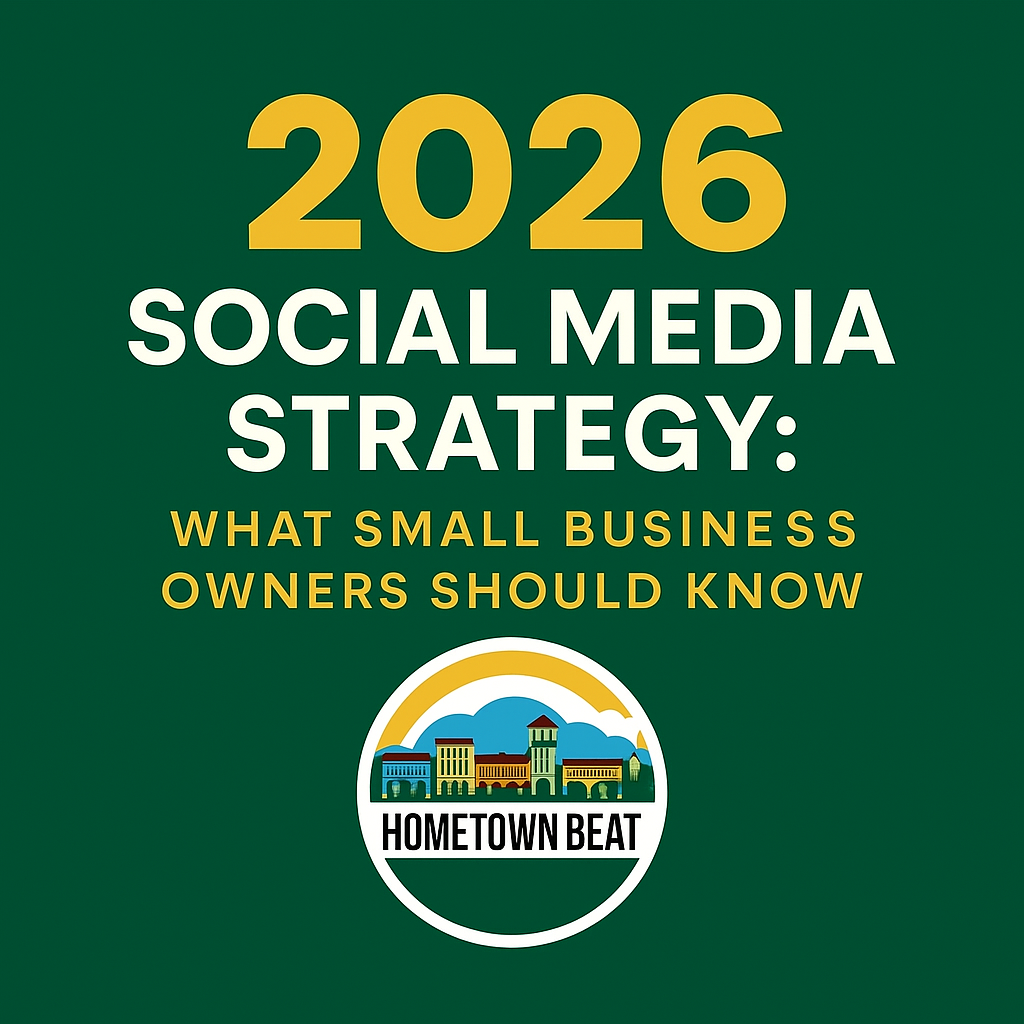AI Governance in SEO: Balancing automation & oversight

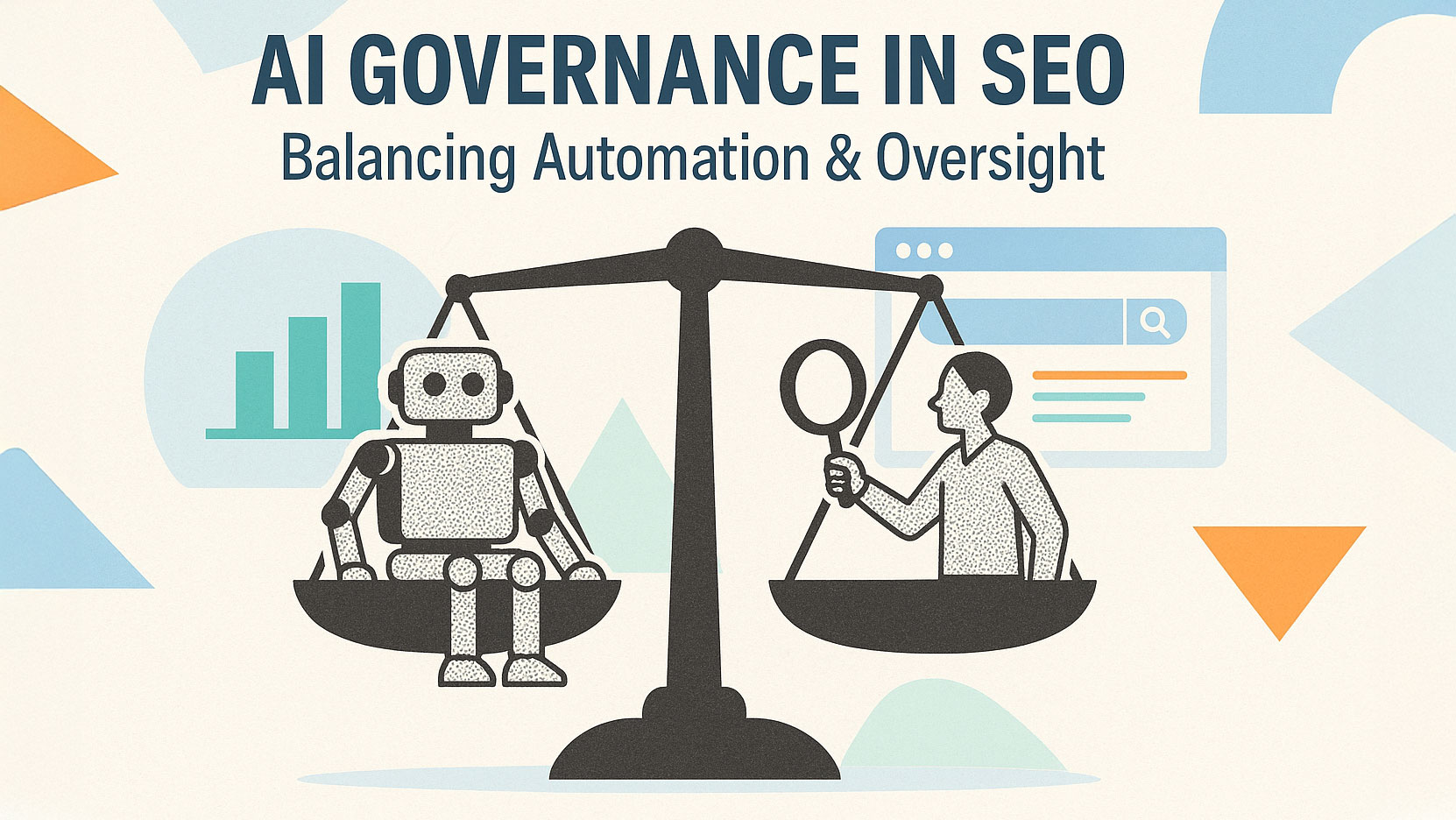
AI governance in SEO is an emerging topic that needs serious consideration. Once perched on the sidelines of SEO, AI is now integrated into many workflows, from writing and research to the analysis and prediction of user behavior.
As automation scales and AI adoption grows, so do the associated risks, including the production of low-quality content, compromised editorial integrity, and erosion of brand trust. AI isn’t going anywhere, and the key to ethical AI usage lies in transparency, risk management, and data protection.
In this guide, we explore AI governance in SEO, including its definition, significance, and implementation strategies that enable responsible scaling while maintaining and enhancing trust signals, rankings, and brand integrity. You can learn how to advance your AI practices while adhering to top ethical standards and mitigating potential risks to security.
What is AI governance in SEO?
AI governance in SEO refers to the policies and processes that guide the responsible use of AI technologies within an organization’s SEO efforts.
It encompasses every facet of AI, from the development and deployment of tools to their effective use, ensuring that all benefits are reaped without any harm. (This means that AI governance is more than just a declaration at the top of a blog stating that AI was used.)
AI governance encompasses transparency with users whose data is impacted by AI analysis and prediction models, as well as general workflows for internal teams, so stakeholders can be assured that teams are using AI in a way that meets legal, ethical, and brand-approved standards.
From a business perspective, AI governance protects organizations and teams that use it by applying rules and integral brand values to its usage. Governance doesn’t have to feel restrictive —teams can still explore AI and its latest developments, but within agreed boundaries that keep organizations and staff safe.
Why AI governance matters more than ever
Use of AI in SEO is scaling rapidly. According to HubSpot’s AI trends for marketers , 67% of marketers are increasing their investment in automation, and 66% of companies are building internal AI tools for marketing.
The trend line below for searches related to “AI SEO” shows the speed at which interest is growing.

Rightfully, well-intentioned team members are looking for ways to accelerate their workflow with agile AI solutions.
AI usage in SEO needs to be managed to prevent it from spiraling into inconsistency and low-quality outputs that harm brands. Without governance, teams are left to define their own standards for AI usage, and these standards may fall short of business, legal, or editorial expectations.
Governance ensures alignment and accountability against corner-cutting in fast-paced, high-pressure environments.
Here are some ways AI governance protects brands.
Maintains high-quality content publishing standards.
Google’s stance on AI is that it’s acceptable to use it, and Google won’t penalize websites or content solely because AI has been employed.
Specifically, Google says , “Our focus on the quality of content, rather than how content is produced, is a useful guide that has helped us deliver reliable, high-quality results to users for years.”
The key is for brands to use AI to create content that is helpful for readers.
Churning out AI-generated long-form articles about complex subjects almost definitely won’t result in high-quality, helpful content for users because AI lacks the finesse, knowledge, and experience to write sophisticated pieces of content well.
That said, short pieces of content or subjective content without nuance can be written with AI. Frequently asked questions are generally short and can be quickly written with AI, as long as a quick edit is conducted by a human to check the answers.
Straightforward, factual content that doesn’t require deep context or subjective judgment can also be written quickly with AI (e.g., “how to reset your email password” or content covering a set process with no nuance). Again, you still need a human to edit drafts for accuracy.
AI governance defines the boundaries within which AI can be used, establishing where it’s helpful for business and readers, and where it becomes unhelpful. Governance will help you identify where AI enhances content and where it diminishes it, simplifying your decision-making around use of AI systems.
The following infographic shows some pros and cons of AI-driven content generation.
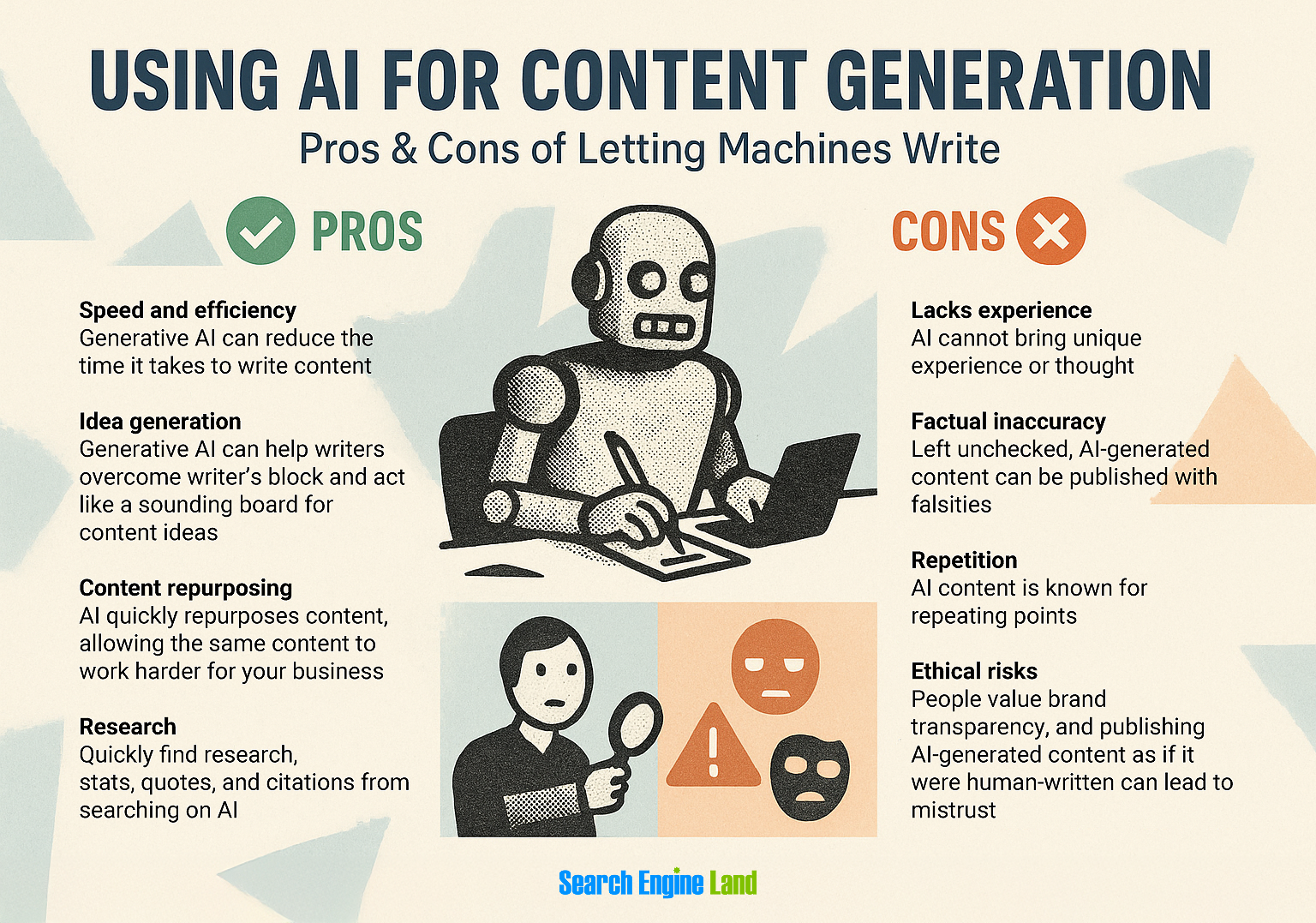
Maintains rankings as algorithms evolve
Search engine algorithms are committed to displaying helpful content. As search engines refine their algorithms in pursuit of this commitment, websites that fall short will be deprioritized in favor of those that publish helpful content.
AI governance ensures that businesses use AI ethically and in a manner that future-proofs their workflows and content.
For a while, churning out large amounts of content at scale worked. Famously, a quick-and-dirty AI SEO tactic called the SEO heist ( read about it here ) resulted in extremely high numbers of keywords ranking and an increase in traffic.
The heist involved a lot of AI: A competitor’s sitemap was copied, AI was used to identify content gaps, and AI content was generated to create a page that reflected what was already on the competitor’s site.
The results?
An upward tick in clicks and keywords ranking.
But it didn’t last.
As algorithms become more sophisticated, sites that over-rely on AI content suffer. As you can see below, traffic and keywords soared, then dropped fast.
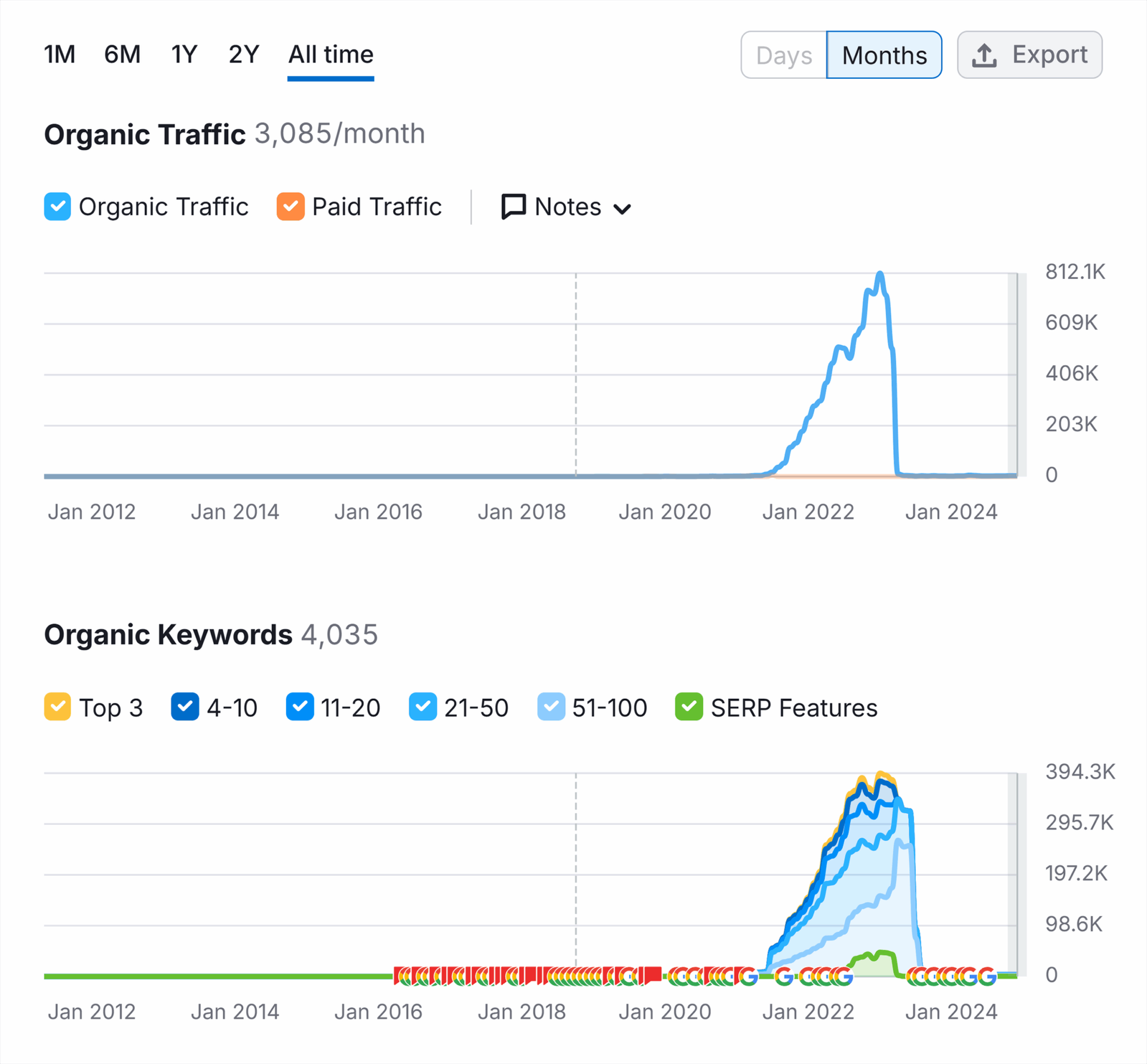
The decline in traffic and keywords that followed the SEO heist’s use of AI-generated content at scale was thought to be due to the creation of poor-quality content to manipulate search engines rather than to help users and build trust.
This website is still live and assumedly trading today, but the business impact is extreme. Today, only one page (the homepage) is available in Google’s index.
The key is using AI integrally so your site won’t be impacted by scaled AI abuse, which could result in helpful content penalties or link spam updates.
Further reading: Want to understand Google penalties in more detail? Read Google penalties: Advanced detection, recovery, and prevention strategies , which covers the types of penalties and how to prevent them.
There’s no doubt that Google will continue to improve algorithms related to helpful content and AI.
Google says:
“Focusing on rewarding quality content has been core to Google since we began. It continues today, including through our ranking systems designed to surface reliable information and our helpful content system. The helpful content system was introduced last year to better ensure those searching get content created primarily for people, rather than for search ranking purposes.”
Maintains brand integrity
Brand integrity goes beyond content. PR News Wire reports that nearly 50% of people experience brand mistrust in circumstances where AI was used to perform a service that they believed was provided by a human.
Transparency is key.
Here’s an example of transparency in action.
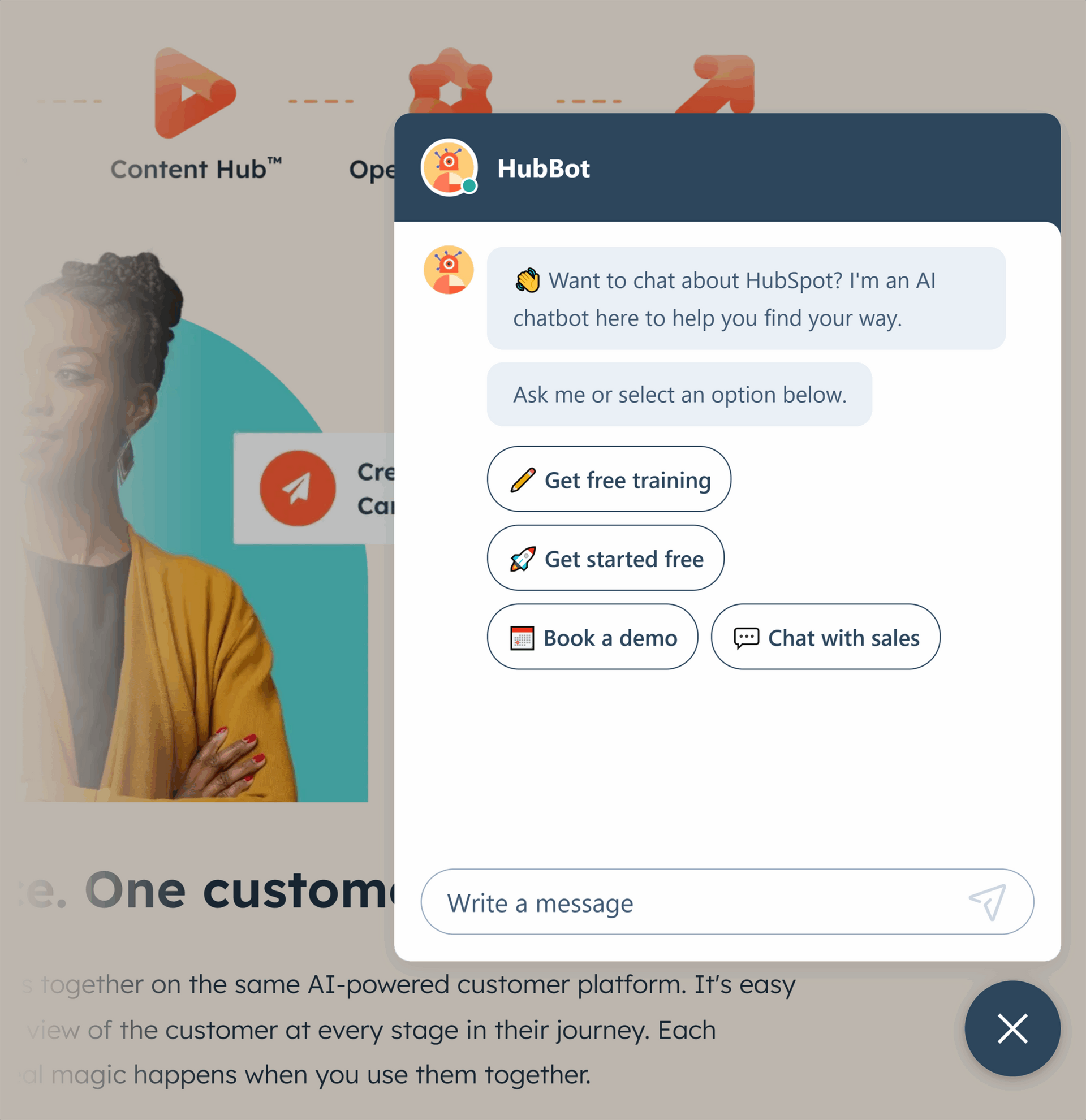
HubSpot’s chatbot is transparent about being an “AI bot.” With one click, users can “Chat with sales.”
Instead of fooling users with a chatbot that looks human, being up front about AI usage is open and honest.
In terms of content, brand integrity remains critical, especially when AI-generated falsehoods are published. Recently, the High Court of England and Wales warned lawyers that they could face criminal prosecution for false material generated by AI. Further initiatives are underway to explore potential AI regulations and review ethical considerations around its use.
Serious trust and liability issues are brewing in the AI content world, and these would be particularly easy to miss in large-scale content production that occurs within enterprise content strategy.
Perhaps the role of SEO widens once again. The need for editorial integrity has never been more prominent.
That said, editorial integrity isn’t new and spans more than just SEO expertise. It may be necessary for content to be edited by a subject matter expert, and a project manager should oversee the entire content workflow to ensure all crucial steps are met. (More on AI governance workflows and best practices is provided below.)
The issue with integrity and AI content is that AI writes everything, even falsities, with complete conviction. For example, an AI might cite studies and research that don’t exist. It does it in such a way that to the untrained eye, it reads as truth.
Google’s experience, expertise, authority, and trust (E-E-A-T) serve as a framework to address issues with AI-generated content. Content that performs well displays high levels of E-E-A-T and is central to SEO.
Further reading: To get a complete grasp on E-E-A-T and its role in SEO, read An SEO guide to understanding E-E-A-T
Maintains privacy, security, and compliance
AI governance in SEO ensures that the use of artificial intelligence aligns with strict security, privacy, and compliance standards. As AI systems analyze large volumes of search data, user behavior, and content performance metrics, governance frameworks establish rules for how this data is collected, stored, and processed. This includes enforcing data minimization, anonymization, and encryption practices to prevent unauthorized access and safeguard sensitive information.
By setting clear guidelines for AI model training and output monitoring, SEO teams can reduce the risk of exposing proprietary strategies, leaking confidential analytics, or inadvertently enabling malicious SEO tactics.
From a regulatory perspective, AI governance helps SEO practitioners operate within legal and ethical boundaries, especially as laws like the GDPR, CCPA, and upcoming AI-specific regulations expand global oversight. Governance ensures AI-driven SEO tools comply with consent requirements, user data rights, and transparency mandates. It also introduces audit trails, bias detection protocols, and explainability measures, allowing teams to verify that AI-generated recommendations are fair, accurate, and aligned with brand integrity.
In doing so, AI governance not only mitigates the risks of fines or reputational damage but also builds trust with stakeholders, customers, and regulators in a rapidly evolving search landscape.
Your Competitors Are Already Optimizing for AI Search. Are You?
✓ Monitor how AI platforms rank you vs competitors in real-time
✓ Discover untapped AI visibility opportunities in your industry
✓ Track sentiment shifts across 5+ major AI platforms
See what AI says about your brand today
Where AI is used in SEO workflows today
The scale of AI use cases in SEO workflows is vast. We’ve moved far beyond generative AI and content.
Here are some ways AI is used in SEO workflows:
- Content creation, including content ideation, brief creation, drafting content, editing, clustering keywords, and writing questions and answers using natural language
- On-page optimization, including title tags, meta descriptions, headings, and internal link insertion
- Programmatic SEO, including page design and AI copy, that allows enterprise businesses to scale fast
- Schema markup creation, including planning properties and types that can be used, then writing the code
- SERP forecasting and competitor analysis , including identifying ranking patterns, identifying content opportunities, content gap analysis, and benchmarking and reporting
- Image and alt-text generation , including sourcing images, generating descriptions, and file names using SEO best practices
- User behavior analysis, including AI insights and summaries of user behaviour at scale (engagement, click patterns, conversion pathways)
- Content performance monitoring , including the detection of underperforming pages, content decay, and ranking shifts
Knowing the scale of AI usage is critical for effective AI governance because, without the big picture of how AI is being used, AI governance cannot be fully comprehensive.
The challenge?
Teams are likely looking for AI solutions and may not be forthcoming with the information they need.
Companies must adopt an openness to discussing AI and how teams are using it, so governance can comprehensively cover all uses. Without thorough governance, businesses and brands are vulnerable to risks that may be difficult to identify.
Key risks of unmanaged AI in SEO
If you’re not “in the trenches” of the day-in-day-out action, the risks of unmanaged AI in SEO would be easy to miss. That is, until you have a traffic graph that looks like the one shared above (a steep decline due to algorithm changes deprioritizing or penalizing a website).
The decline can be caused by these consequences of unmanaged AI:
Over-automation without editorial review
A content marketing team can look like they’ve got their workflows together when content is being published at scale. On the surface, AI content can look excellent:
- Topically relevant
- Grammatically correct
- Detailed
- Well presented (headings, nice formatting, and images)
But underneath the surface, the content can:
- Lack unique insights
- Have no editorial finesse
- Become repetitive since AI can only copy and rewrite what’s available
- Include AI errors such as hallucinations or factual inaccuracies
- Fail to meet brand tone, accessibility standards, and compliance
All of the above failings to meet high-quality editorial standards should be flagged as a potential future threat to your website. If they’re not already, they likely will be in the future.
Why?
Because search engine algorithms will continue to change, as they always have.
Algorithm updates are likely what have kept Google the number one search engine for decades, and it’s probable that other forms of search will follow suit. AI search, such as ChatGPT or Perplexity, will need to find a way to display only helpful content, similarly to how Google does: through updates and iterations, prioritizing content with high levels of E-E-A-T.
E-E-A-T erosion
AI-generated content without review can lead to E-E-A-T erosion, meaning that the AI-generated content fails to demonstrate experience, expertise, authority, and trust.
Without E-E-A-T, why should people (or search algorithms) trust you?
For example, if you publish content without editorial review, there could be:
- No clear authorship
- No real-world experience
- Generic statements
AI-generated content is easier to spot than you might think. If you like reading, over-reliance on AI stands out.
How?
Through overuse of generic AI language.
Even ChatGPT can list many AI “thumbprints” in writing.

Words and phrases such as “powerful,” “leverage,” and “in today’s fast-paced world…” point to AI. Knowing this, it wouldn’t be difficult for a flag to be applied to these words as part of an algorithm.
Does this mean that these words are banned?
No.
Remember, it’s overuse that’s the issue.
Thin or duplicative content at scale
Thin content refers to websites that don’t add value. The content likely doesn’t fulfill search intent.
For example, an article on E-E-A-T and SEO that covers only what it is and why it’s important won’t suffice as a comprehensive, page-one article.
Why?
Because it lacks depth. The topic of E-E-A-T and SEO requires a lot more to be competitive and stack up against what’s already ranking. Other sites cover a range of related topics, including definitions of each component, guidelines, and how sites achieve E-E-A-T.
Similarly, duplicate content that adds nothing new to search engine results pages (SERPs) won’t rank higher than content that provides new and insightful information.
Both thin and duplicate content bring risks of content collapse or deindexation. In the SEO heist example above, the screenshot shows a decline to zero rankings, and a search for the site reveals only one page ranking.
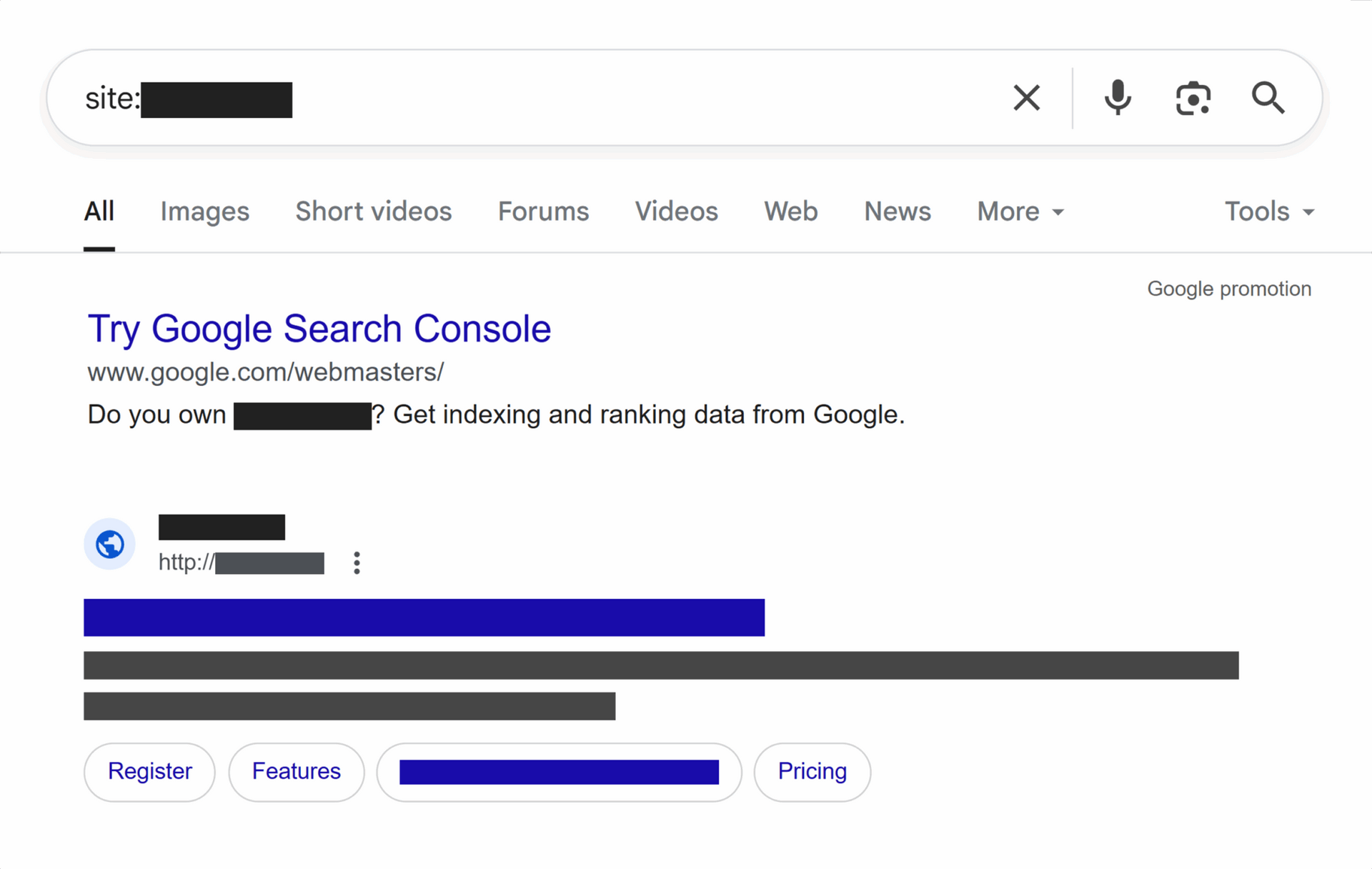
Algorithmic penalties or demotions
Ultimately, using AI without proper governance can lead to ranking demotions or, even worse, penalties.
We know that Google’s Helpful Content rolled out with improved classifiers , an algorithmic system that generates a signal to Google that something is good or bad.
Poor-quality content will generate a negative signal, and enough of these can lead to a ranking demotion or penalty.
Even if a site avoids direct penalties, Google may deprioritize sections that appear automated, pushing them lower in search results or removing them from the index entirely. This is possibly what happened in the SEO heist example above.
The result?
Fewer impressions, less traffic, and eroded trust in your domain.
Association with link spam
Unchecked AI runs the risk of being associated with link spam, which refers to manipulative linking practices with an aim to boost rankings wrongfully. AI-generated pages with AI link insertion are very easily overdone.
Why?
Because you can let linking tools run amok on your site, linking words without possessing the intelligence to think about placement and context. This means you could end up with links in unusual places, such as within the text of a CTA that was intended to direct people to a conversion, rather than your top-funnel article.
You’ll know if you’ve got a penalty because it’ll be recorded in your Google Search Console (in the “Security and Manual Actions report) and will look like this:
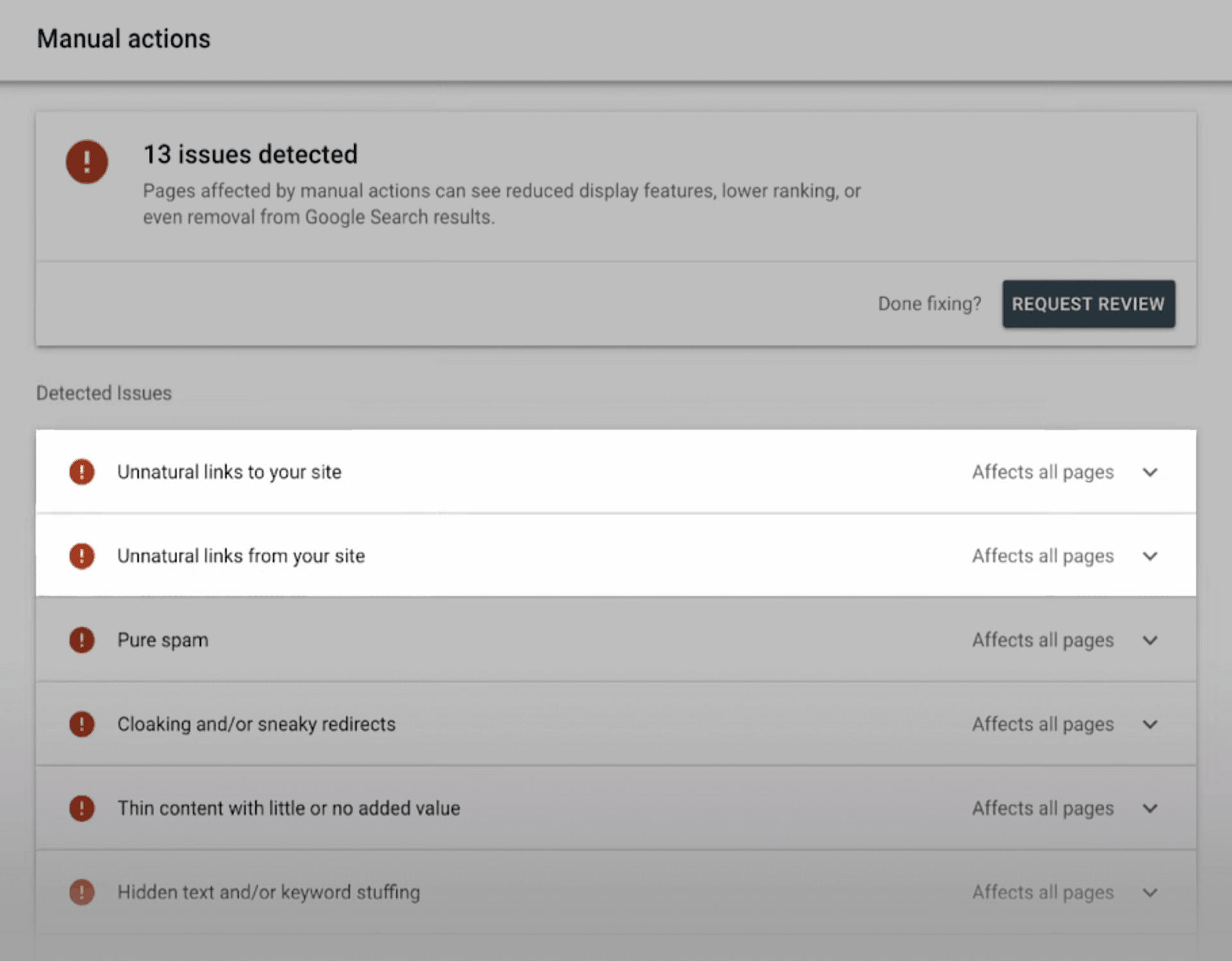
AI dependency limiting the team’s critical thinking
A larger risk for businesses might be that an overreliance on AI in SEO prevents teams from thinking critically. This is particularly true for data analysis or user behavior analysis.
For example, you may have a piece of content on your website that is popular, as indicated by Google Analytics. The page is viewed thousands of times every time it’s shared on social media and email. Maybe it even converts.
For good reason, the page doesn’t rank on search engines. It’s not geared for SEO, and it was never intended for ranking.
It wouldn’t be unreasonable for an AI-generated SEO insight tool to suggest that the page is a poor performer, as it generates few clicks.
An AI-dependent team member might run with this and make a rash decision, such as deleting the page or editing it to improve its ranking, thereby destroying the original intention of the page.
What you want instead is a team of people who can take the AI insight and apply their broader knowledge of the marketing strategy to it to verify the recommendation as accurate or not.
Pillars of AI governance in SEO
Before getting into AI governance in SEO best practices, let’s review what responsible AI looks like.
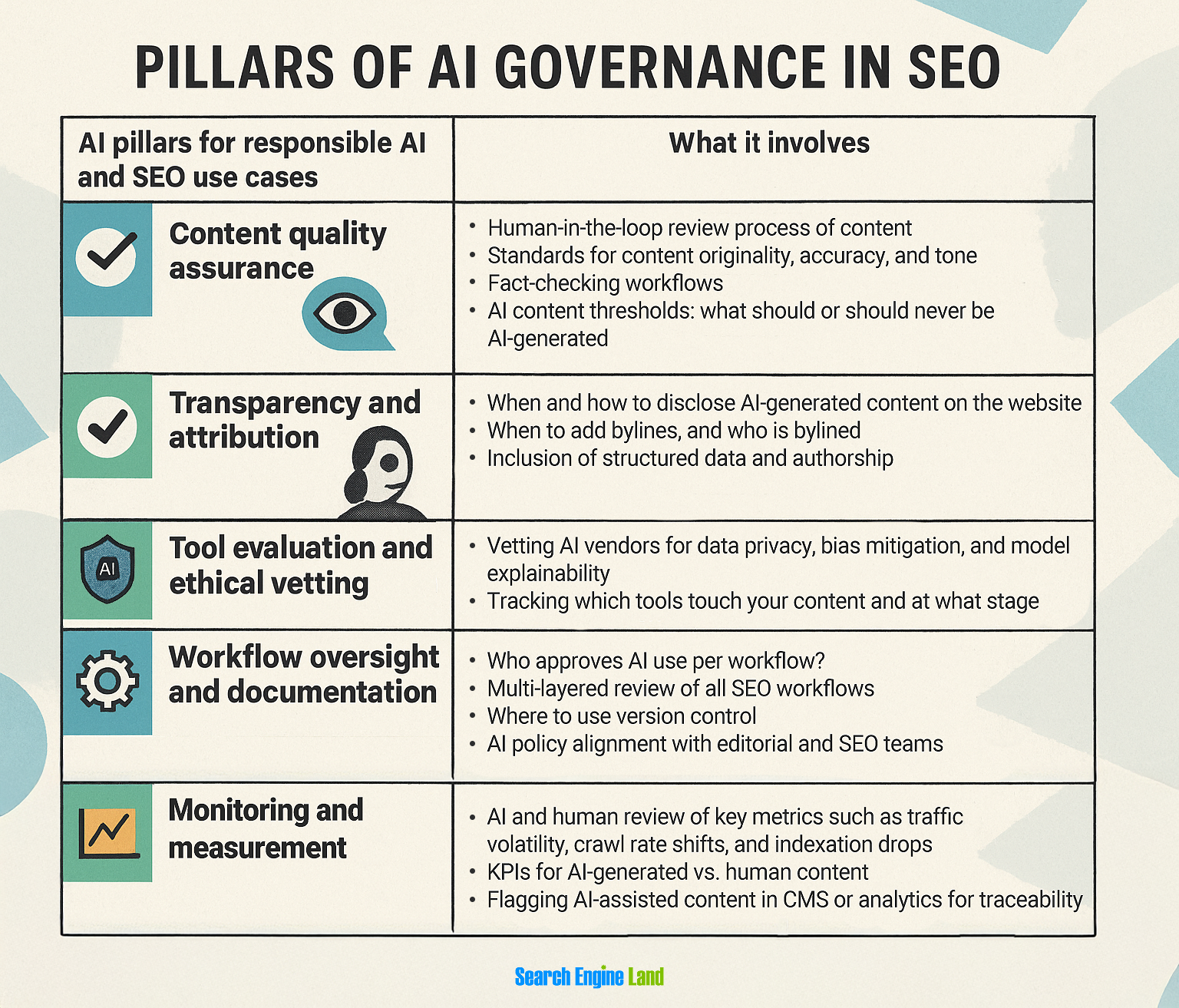
For this guide, the pillars of AI and governance are:
- Content quality assurance
- Transparency and attribution
- Workflow oversight and documentation
- Tool evaluation and ethical vetting
- Monitoring and measurement
Content quality assurance
Content quality assurance ensures that content meets editorial standards. To achieve this, you’ll need a human-in-the-loop review process, which may involve multiple human reviews, from the SEO specialist to the brand manager and subject matter expert.
Ideally, there will be fact-checking workflows so review teams are aware of what to check. You might include AI thumbprints, such as the words and phrases mentioned above. Stress the importance of checking studies and research to check they’re not hallucinations.
There should be benchmarks for originality, accuracy, and tone, all of which you could record in your tone of voice and brand guidelines.
Finally, establish clear rules and thresholds for what should never be generated by AI. For example, your money or your life (YMYL) topics, meaning essential topics that impact things like law, health, and news, should always be human-written
Transparency and attribution
Generally, when something is fully AI-generated, a caveat is added to inform the reader. For example, here’s what Google adds to all AI overviews.

As a brand, you need to think about what you want to disclose and when. A blog written with AI assistance, for instance, may not need disclosure, provided a human has heavily edited the content.
In circumstances where a human has conducted a significant edit, you may choose to provide the byline of the person and reflect this data in the structured data and schema, which provides additional information about the author to Google and search engine bots.
Workflow oversight and documentation
Your SEO and AI workflows need to be tested and approved, and they need to work for all teams using them.
Then, they need to be documented as an AI policy in one place. Keep a master document that you can refer back to. A tool like Google Docs is good—you have version control so you can see and roll back iterations. Google Documents also serves as an audit log, allowing you to see exactly what was changed and by whom.
Your AI documentation needs to support editorial and SEO teams as much as it does the brand. The policies need to ensure that teams can use the AI efficiently and effectively, while also setting boundaries.
Depending on the size of your organization, you may require multiple approvals for policies, including those from content managers, SEO specialists, legal teams, brand managers, and other relevant stakeholders.
Tool evaluation and ethical vetting
Tool evaluation and ethical vetting shouldn’t be a new concept. It’s become particularly prominent in the digital world, especially in Europe, with the rise of data privacy and policies such as GDPR.
These days, you need to evaluate and vet tools so that you can be transparent about how they’re used and what they track. This type of information should be readily available on your website as part of your cookie or privacy policies.
While AI usage isn’t yet as developed, AI usage in SEO and digital will likely follow the same path as analytical tools.
When it comes to AI, responsible, ethical vetting goes beyond how it’s used and includes:
- Data privacy policies of the tool itself
- Bias mitigation within the tool, and also how you’ll mitigate bias within inputs
- Tracking, within workflows , which tools touched your content, when, and what they added
- Model explainability breaking down how a tool works and why it produces specific outcomes (this understanding bridges the gap between AI output and human judgment)
If you’re taking your AI very seriously, you might start thinking about your AI options, including OpenAI, an open-source solution, or a proprietary tool. All come with pros and cons:
- Open AI is versatile but, as the name suggests, open. Anything you type into it could be shared with the model. There are premium plans ($200/month) with additional guardrails.
- Open-source options require technical input, but they give you more control. You can take an open-source AI tool and customize it with your own technical input.
- Proprietary tools are usually built by enterprise companies like Google, OpenAI, IBM, or Microsoft. You can access these tools with a subscription. Many are built with a specific focus (IBM’s Watson, for example, is tailored to industries such as healthcare).
Monitoring and measurement
Effective and ethical AI governance doesn’t stop once your policies are created and your boundaries or appropriate use are set. AI is likely to become more ingrained in what we do and deemed more useful. Consequently, policies and processes must be updated.
As you use AI, it’s essential to monitor key metrics that indicate whether the SEO is helping or hindering. You’re looking for significant or drastic changes to help guide your decisions.
For example, look out for:
- Traffic: Increases in traffic indicate that your AI content is working for you; drops suggest the opposite
- Volatility in rankings: If rankings fluctuate, it could be a signal that your AI content is working for or against you, or it could be that Google is running a test or an algorithm update has occurred. Be careful not to assume every change is linked to something you’ve done; sometimes, you need to wait and see what happens for a period of time.
- Crawl rate shifts: Reductions indicate that crawling your content is being deprioritized because the content is poor
- Indexation drops: Significant changes to a page can cause it to be temporarily removed from the index while Google re-indexes it. If indexation drops but pages don’t return, you have a problem.
Analyze your findings carefully. Not everything you see will be related to your changes. It’s good to give everything a bit of time to recalibrate after significant content changes.
You can measure your content in categories (e.g., pieces generated with AI vs. pieces generated by humans) to see if there’s a noticeable difference in how they’re performing.
When you know how AI has impacted your site and processes, you can update guidelines and governance.
Pro tip : Tag AI-assisted content in your CMS or content database for traceability so you can track AI’s involvement.
Best practices for scaling AI responsibly in SEO
Here are some best practice tips for scaling AI responsibly in SEO. These are the types of processes you might include in your AI governance.
1. Create a workflow with every step laid out
A workflow is essential for efficient processes. The more workflows you record and document within your marketing and SEO practices, the better.
Why?
Because workflows ensure layers of human approval and editing, a documented workflow outlives things like staff churn. It becomes a part of your operations, regardless of who’s spearheading the work.
Here’s an example of the content workflow we use at Search Engine Land.
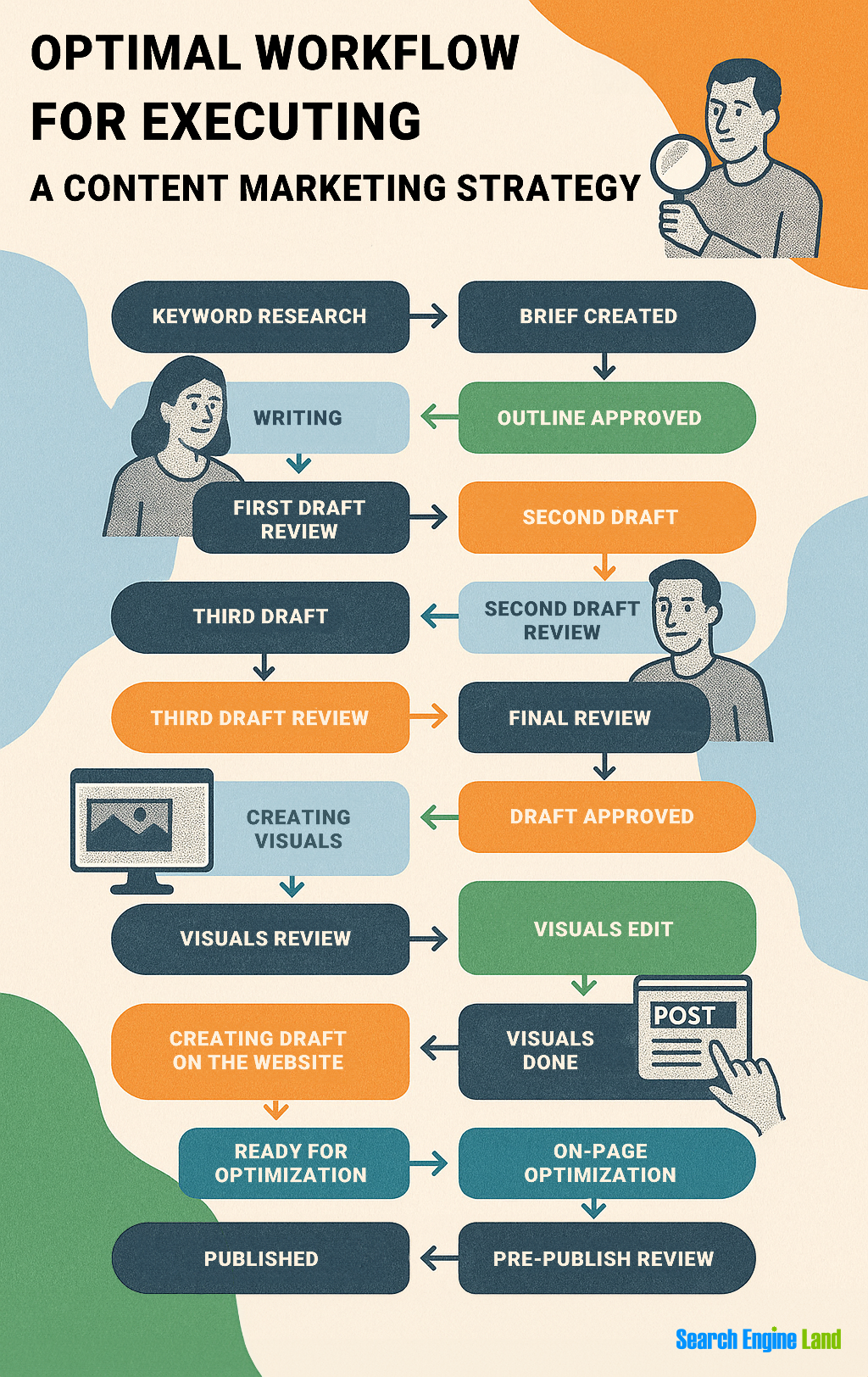
This workflow is good because it:
- Includes multiple reviews of content
- Details the workflow step-by-step (e.g., first draft review > second draft > second draft review > third draft > third draft review) instead of an over-simplified step like “write content”
- The workflow is followed without exception
2. Create layered review protocols (SEO, editorial, brand)
You can adjust your workflow to include as many steps as you need.
For example, enterprise businesses might have multiple reviews required:
- SEO reviews to get pages ranking on Google
- Editorial reviews to ensure spelling, grammar, and the overall article is well-written and adheres to a high standard
- Brand reviews are conducted to ensure that all claims align with the brand’s values
- Subject matter experts (SME) reviews to ensure the content is factually accurate, up-to-date, and includes new, insightful findings
3. Maintain a source-of-truth page taxonomy
There may be rules governing the content that can be created using AI and the content that can’t. A clear taxonomy defines the rules regarding which pages can use AI and which require expert authorship.
For example, some blogs might be suitable for AI-generated content to be used (alongside human review), whereas legal advice or thought leadership should never use AI-generated content.
4. Use AI where it adds value—not where it fills a quota
A lot of AI use cases shared across the web share arbitrary targets and success, like “Success story: 1,000 articles in 10 days,” or “How we ranked 1,000 new keywords in a week.”
While these measures may sound impressive on the surface, they’re rather meaningless.
AI should be adding value to your business, your team, and your audience.
Instead of setting arbitrary goals, clarify where you can deploy AI in a meaningful way.
For example, “We want to understand our users’ behaviour better. Use AI to summarize user behavior on our website, then spot-check three user behavior recordings per day for a week to see if human findings align with the AI-generated summary.”
5. Start small: Test 10 pages, then scale
When implementing a new workflow, always start small. Start with a percentage of content on your site (say 5%), or start with 10 pages, then carefully monitor the results.
There are two significant benefits of working with AI like this in SEO:
- Your team gets to steadily test a workflow and spot areas of improvement before it’s fully rolled out
- You monitor how Google responds to the AI changes. If results tanked for those few pages, roll them back and no more content is harmed.
6. Test and iterate
Once everything is set up, don’t rest on your laurels. It feels as though the search landscape has never changed so quickly. This means we need to be agile and adaptive with our processes and workflows.
Keep an eye on what’s working and what isn’t so you can iterate processes. Listen to everyone involved in the process to identify areas for improvement.
What Google has (and hasn’t) said about AI in SEO
AI-generated content isn’t the SEO crime that it was once thought to be.
Google has been clear on that.
The search engine giant wants to see content created by people, for people , but this shouldn’t translate to Google insisting that humans write every single word. Instead, it’s about quality and value that humans can bring through edits. If a human approves AI-generated content as reliable, helpful, and suitable for readers, then it’s enough.
Google says, “Automation has long been used in publishing to create useful content. AI can assist with and generate useful content in exciting new ways.”
When it comes to scaling content with AI, it may be that the AI component is fairly low on the impact scale (providing the content is edited).
John Mueller says:
“If you grow a website significantly…by a factor of 10, then your website will overall be very different. By definition, the old website would only be 10% of the new website. This means it’s only logical to expect search engines to re-evaluate how they show your website. It’s basically a new website after all.”
With this quote in mind, it makes sense why a website may experience changes after rapid content growth. If the old website is just a percentage of the entire website architecture, it makes sense that it takes time to re-evaluate the website and also why there may be significant changes. This is why it’s important to follow the best practice of starting small.
The key, it seems, is less about AI and more about quality content. If your AI governance is in place and AI is ethically used, there should be no problems for businesses that want to use AI.
For more support on AI and its uses in SEO, read:



